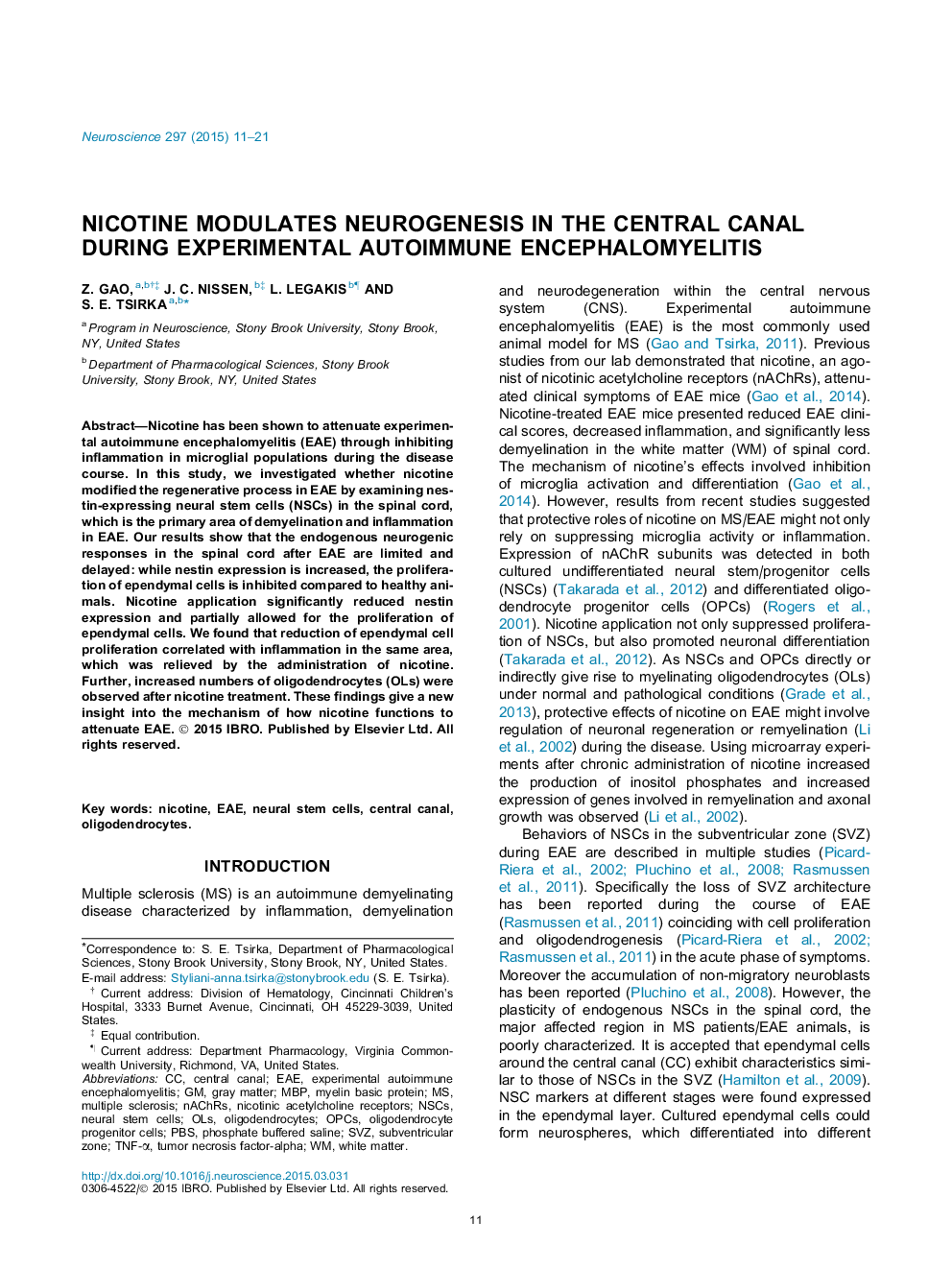| Article ID | Journal | Published Year | Pages | File Type |
|---|---|---|---|---|
| 6272314 | Neuroscience | 2015 | 11 Pages |
â¢Proliferation of ependymal cells is reduced in the central canal following EAE.â¢Ependymal cell proliferation is reduced in areas of inflammation.â¢Nicotine treatment in EAE reduced nestin expression and promoted ependymal cell proliferation.â¢Nicotine treatment resulted in increased numbers of mature oligodendrocytes.
Nicotine has been shown to attenuate experimental autoimmune encephalomyelitis (EAE) through inhibiting inflammation in microglial populations during the disease course. In this study, we investigated whether nicotine modified the regenerative process in EAE by examining nestin-expressing neural stem cells (NSCs) in the spinal cord, which is the primary area of demyelination and inflammation in EAE. Our results show that the endogenous neurogenic responses in the spinal cord after EAE are limited and delayed: while nestin expression is increased, the proliferation of ependymal cells is inhibited compared to healthy animals. Nicotine application significantly reduced nestin expression and partially allowed for the proliferation of ependymal cells. We found that reduction of ependymal cell proliferation correlated with inflammation in the same area, which was relieved by the administration of nicotine. Further, increased numbers of oligodendrocytes (OLs) were observed after nicotine treatment. These findings give a new insight into the mechanism of how nicotine functions to attenuate EAE.
